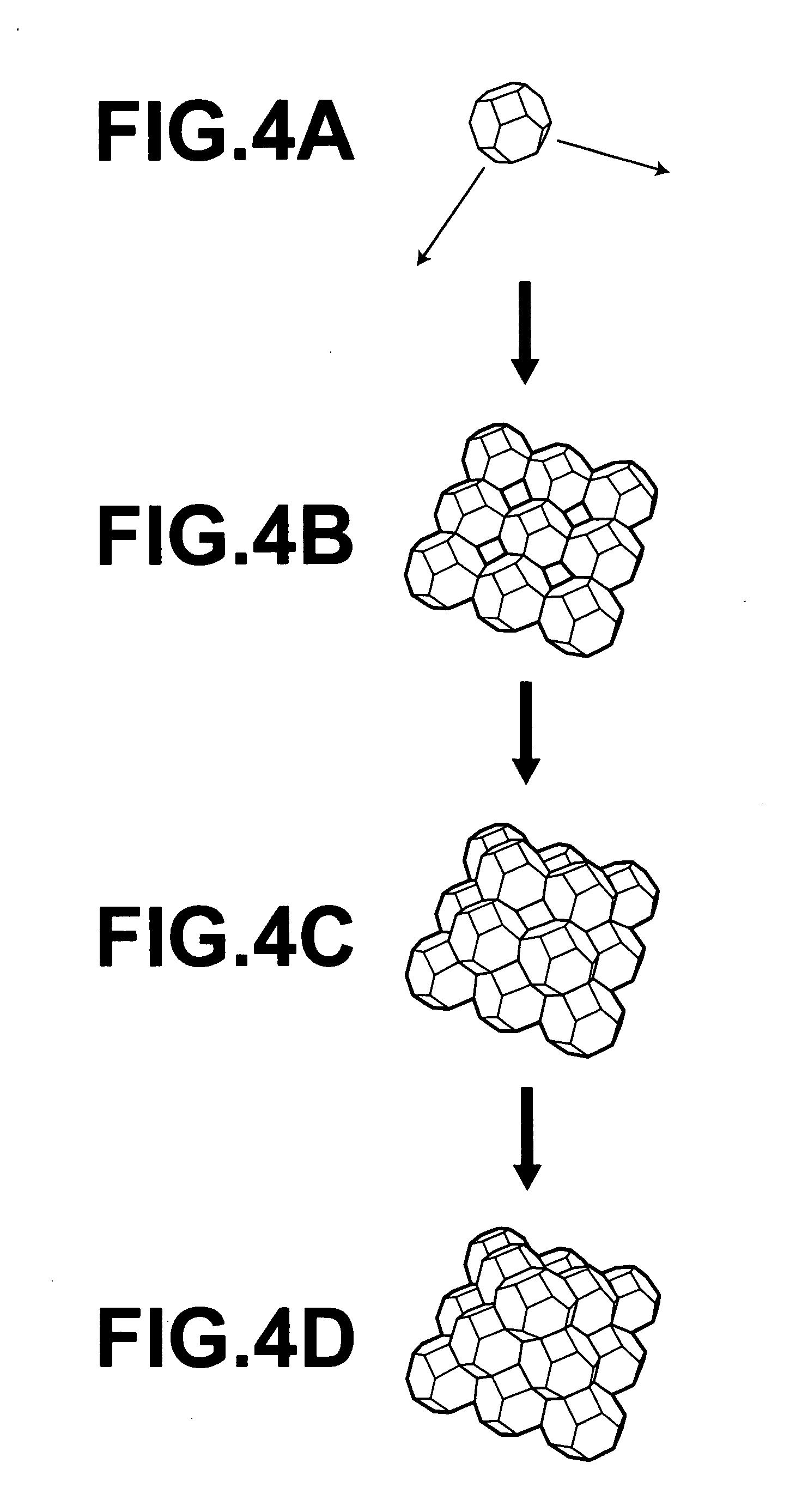Translucent material and manufacturing method of the same
a technology of transparent material and manufacturing method, which is applied in the field of transparent material, can solve the problems of inability to fully understand the concept of space filling with polyhedron microparticles, the manufacturing method is vastly different from the hydrothermal synthesis method founded on liquid phase, and the process is extremely complicated and non-productive, so as to achieve effective suppression of gaps in the finished sintered body and promote sintering
- Summary
- Abstract
- Description
- Claims
- Application Information
AI Technical Summary
Benefits of technology
Problems solved by technology
Method used
Image
Examples
example 1
[0076]17.237 g of yttrium nitrate [Y(NO3)3.6H2O] and 28.133 g of aluminum nitrate [Al(NO3)3.9H2O] respectively were precisely weighed, and dissolved in approximately 40 ml of water in a beaker. Meanwhile, about 20 g of KOH granules were weighed in a separate beaker making a total of about 30 to 40 ml, and this was gradually added while agitating into the aqueous solution containing the yttrium and aluminum. Then, KOH granules were suitably added to make the pH 12.0, and the total amount of solution was brought to 100 ml. This raw material aqueous solution was placed in an autoclave made of Hastelloy, and was allowed to react at 355° C. for 2 hours while agitating in an agitation apparatus that had undergone platinum lining processing.
[0077]After the reaction, the internal solution is moved to a beaker, and a decantation process that eliminates just the supernatant part is conducted 10 or more times with hot water, and finally the reaction precipitate is filtered. Part of this filter...
example 2
[0079]An aqueous solution of equal concentrations of yttrium, aluminum and KOH alkali adjusted in advance for hydrothermal synthesis was used, and was added to fine crystalline particles prepared by the same hydrothermal synthesis as example 1. At this time, the mol ratio of fine crystalline particles and the added aqueous solution (amount of YAG raw material mixed in) converted to YAG was pre-adjusted to about 100:1. The solution prepared in this way was again allowed to react for 1 hour at 250° C. in an autoclave. After removing from the autoclave and conducting decantation 10 times or more, this was made into a mixed solution by mixing together with a dispersion medium in the same way as in example 1, and was poured in a container with a bottom having an extremely smooth finish, and the particles were allowed to slowly settle.
[0080]Next, the supernatant was gently wiped off, and this was allowed to dry undisturbed to make a pancake-shaped substance. A sintered body was obtained b...
example 3
[0081]17.237 g of yttrium nitrate [Y(NO3)3.6H2O] and 28.133 g of aluminum nitrate [Al(NO3)3.9H2O] respectively were precisely weighed, and dissolved in approximately 40 ml of water in a beaker. Meanwhile, about 20 g of KOH granules were weighed in a separate beaker making a total of about 30 to 40 ml, and this was gradually added while agitating into the aqueous solution containing the yttrium and aluminum. Then, KOH granules were suitably added to make the pH 11.5, and the total amount of solution was brought to 100 ml. This raw material aqueous solution was placed in an autoclave made of Hastelloy, and was allowed to react at 300° C. for 30 minutes while agitating in an agitation apparatus that had undergone platinum lining processing.
[0082]After the reaction, the internal solution is moved to a beaker, and a decantation process that eliminates just the supernatant part is conducted 10 or times with hot water, and finally the reaction precipitate is filtered. Part of this filtered...
PUM
| Property | Measurement | Unit |
|---|---|---|
| emission wavelength band | aaaaa | aaaaa |
| wavelengths | aaaaa | aaaaa |
| temperature | aaaaa | aaaaa |
Abstract
Description
Claims
Application Information
 Login to View More
Login to View More - R&D
- Intellectual Property
- Life Sciences
- Materials
- Tech Scout
- Unparalleled Data Quality
- Higher Quality Content
- 60% Fewer Hallucinations
Browse by: Latest US Patents, China's latest patents, Technical Efficacy Thesaurus, Application Domain, Technology Topic, Popular Technical Reports.
© 2025 PatSnap. All rights reserved.Legal|Privacy policy|Modern Slavery Act Transparency Statement|Sitemap|About US| Contact US: help@patsnap.com



